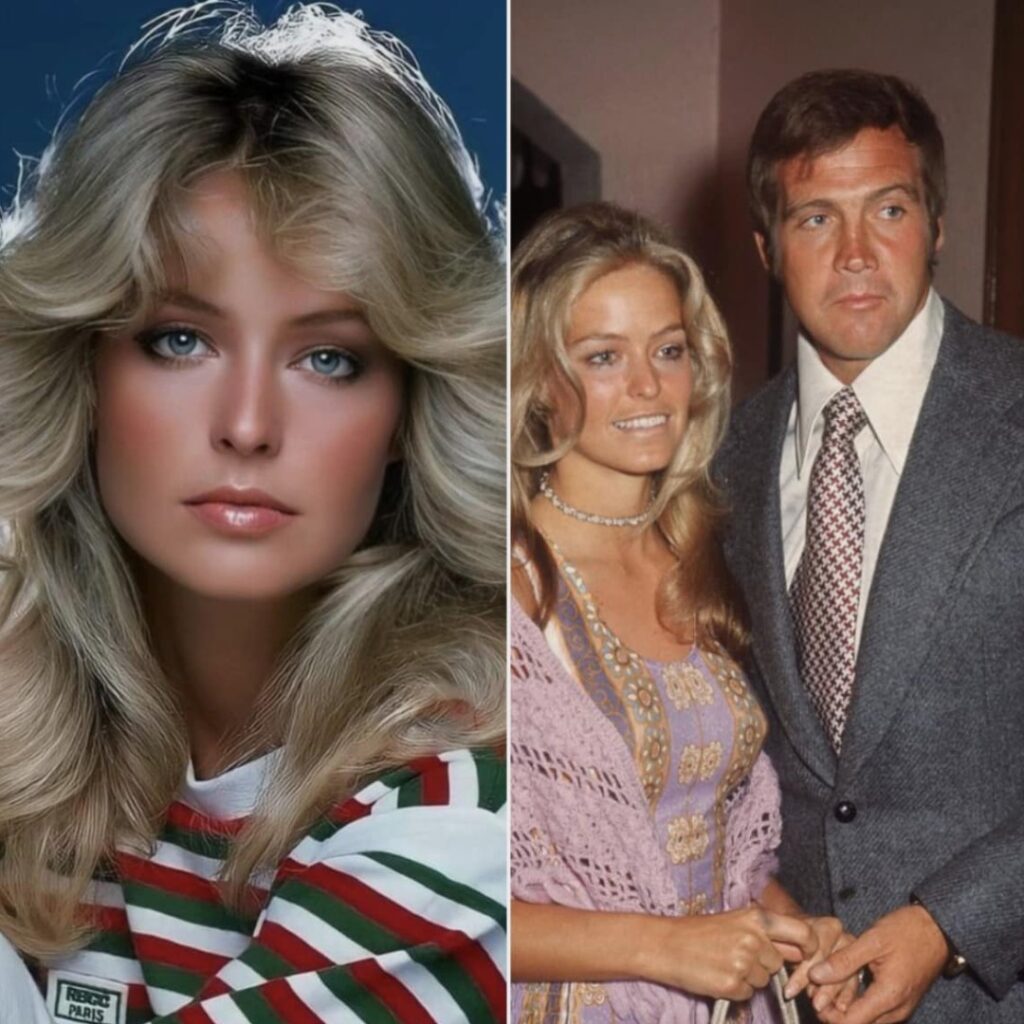
Iconic Farrah Fawcett: A Star Beyond Charlie’s Angels
After her successful tenure on Charlie’s Angels, Farrah Fawcett ascended to immense celebrity status, with her iconic hairstyle and pin-up image only serving to amplify her fame.
However, during this period of heightened celebrity, Fawcett also faced significant challenges. She found herself entangled in a multi-million dollar lawsuit against her former company, adding a layer of complexity to her life. Additionally, her romantic relationships were known to be tumultuous, with the 1990s witnessing a particularly turbulent affair with actor Ryan O’Neal, marked by upheavals.
Perhaps the most poignant aspect of her life during this time was the unexpected discovery that led her to make the difficult decision to end her relationship with O’Neal. Explore the lesser-known facets of the beloved actress Farrah Fawcett’s life here!

On February 2, 1947, in Corpus Christi, Texas, Farrah Fawcett was born to Pauline and Jim, with Pauline as a stay-at-home mom and Jim working as an oil field contractor. Originally named Ferrah, which means joy in Arabic, she later decided to change it.
Farrah would go on to become one of the most captivating “golden girls” of her era. Her mother, Pauline, recounted to Texas Monthly that whenever she brought Farrah into a store, shoppers would pause and exclaim, “She looks like an a-n-g-e-l.” Pauline added that neighboring kids frequently visited their home just to catch a glimpse of her.
However, it wasn’t all positive for Farrah. While her mother appreciated the admiration for her daughter, it posed challenges. Farrah, despite being aware of her beauty, found herself feeling self-conscious. Pauline recalled Farrah expressing, “I wanted people not to look at me because so many people kept looking at me.”
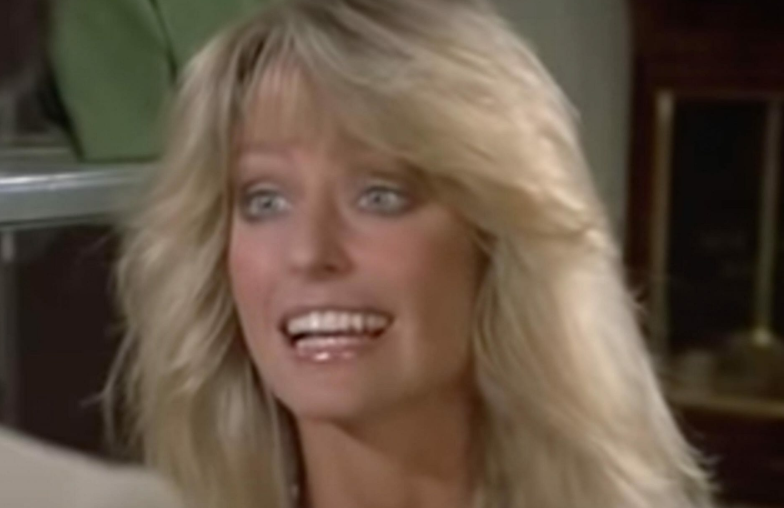
Fawcett’s appearance undeniably played a significant role in her life, even though appearances aren’t everything. She was awarded the “Most Beautiful” title by her high school peers for three consecutive years. Upon relocating to Austin in 1965 to attend the University of Texas, she was once again chosen as the “Most Beautiful” student during her first year of college.
Initially pursuing studies in microbiology and art at the University of Texas, Fawcett’s life took a different turn after a picture of her, selected as one of the “Ten Most Beautiful” women at the university, was sent to Hollywood PR expert David Mirisch. Impressed by her beauty, Mirisch called Farrah during her class to persuade her to drop out and move to Los Angeles, where he believed he could help her start a modeling career.
Despite Fawcett’s requests for Mirisch to speak with her father, he persisted in convincing her to take the chance and move to Hollywood.
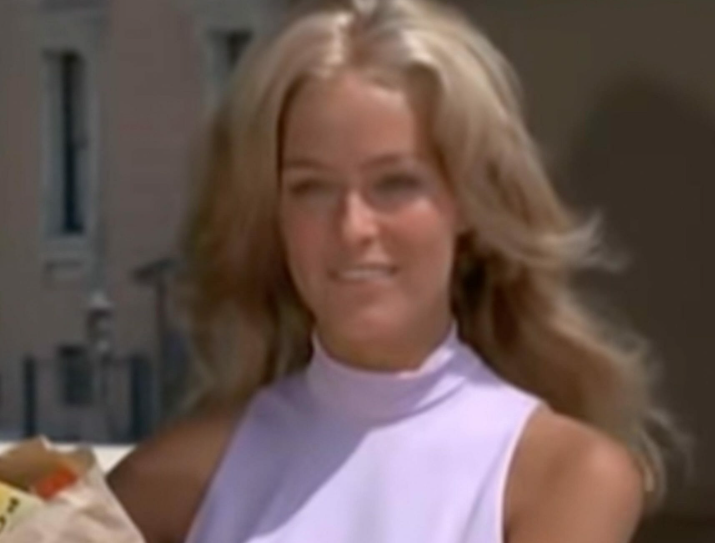
After completing her junior year, Farrah finally came to a conclusion. A photographer for the Texas Student Publications took her picture in a park in Texas. Her intention was to visit Los Angeles for a brief period of time to get a taste of the city before returning to school for her senior year.
As we now know, that never happened.
After relocating to Los Angeles, Fawcett quickly got a deal with Screen Gems, which reportedly paid her roughly $360 per week. She started performing work for Max Factor and Mercury Cougar Cars, as well as advertisements for Wela Balsam and Ultra-Brite toothpaste.
Farrah was a talented actor as well as a fantastic model. After a few more assignments as a model, which involved posing for numerous magazine covers, she started landing acting roles in the middle of the 1960s. Soon after, she started starring in television advertisements.
She initially appeared in television series such as I Dream of Jeannie, The Partridge Family, and The Flying Nun.
At that time, Farrah was on a steady rise towards fame. Then, everything changed in 1976, as she became world-famous thanks to two jobs.
Farrah was cast in the 1975 television movie Murder on Flight 502 by renowned television producer Aaron Spelling. He had been quite taken with her acting after that. After that, he made the decision to put her in a brand-new television series called Charlie’s Angels, which would feature three female detectives as its main characters.
We were looking for the California beach-girl type, and Farrah was perfect for that,” he wrote in his 1996 memoir A Prime-Time Life. “She was drop-dead gorgeous and the living image of the beautiful L.A blonde in tennis shorts or a bathing suit.”
The program premiered in September 1976, and despite some harsh criticism, the audience adored it. Alongside Kate Jackson and Jaclyn Smith, Farrah played the role of agent Jill Munroe on the show. She was mostly responsible, in Spelling’s opinion, for Charlie’s Angels’ positive reception among viewers.
“We thought about changing it for a moment in the beginning, and had we been doing a traditional cop show, we would have,” he wrote. “But her hair helped make the show. It became one of our signatures.”
Like her father, Lisa Marie Presley is a musician. She has continued to be in the public eye while building her own musical career. Lisa has been married four times and has gone through three divorces. Her marriages to Michael Jackson and Nicolas Cage have garnered a lot of media attention.
“Her feathered, high-lighted, layered phenomenon was a work of art that looked as if it had just come out of the sea and had been tossed by the wind into a state of careless perfection. Farrah’s hair was emblematic of women in the first stage of liberation – strong, confident, and joyous – before the reality of mortgage payments and single parenthood set in,” the Times wrote, as quoted by Texas Monthly.
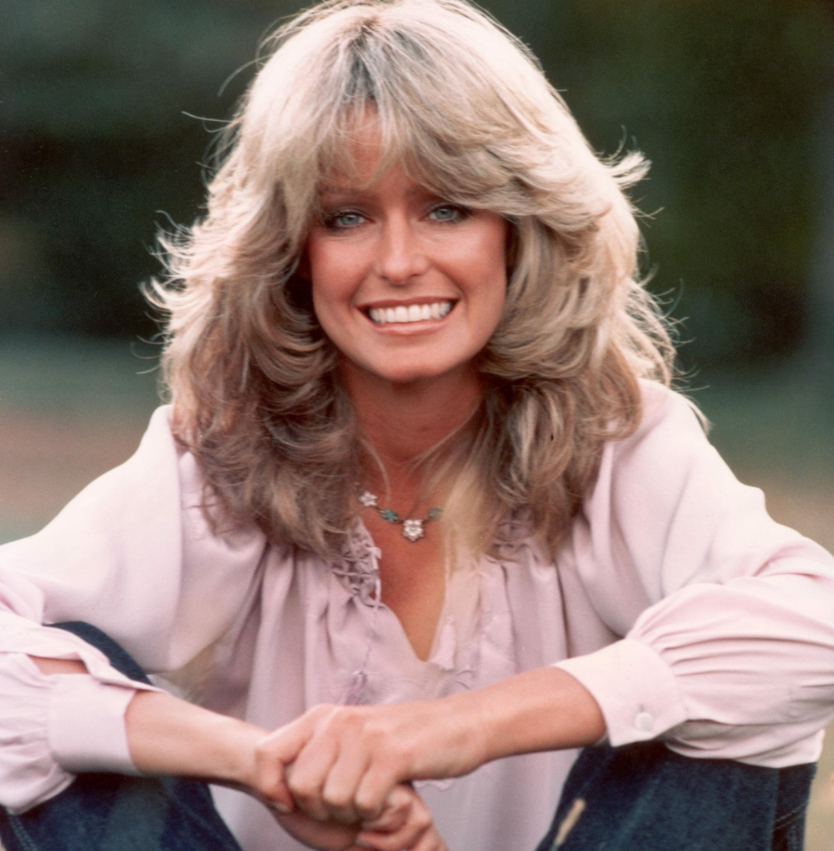
However, Farrah had had enough of Charlie’s Angels after just one season. She believed that the lengthy production schedule and the screenplay both needed improvement. She therefore deemed her contract void and fled.
A $7 million contract breach case was then filed against her. Fawcett later consented to return for six more episodes as part of a settlement. She only made an appearance in 29 of the 115 episodes, yet she was still the big star.
“I left Charlie’s Angels because I felt creatively stifled,” Farrah said.
“Now, when I go back to Charlie’s Angels, it is much better. I have a chance to work with the writers on the script and the director. I can treat it like a business, I could not do that before, I was hurt at first because I was sued.”
She added: “I read things in the press that hurt, like things that girls had said. All of that is past now. We are all friends again. I feel much better.”
In addition to being a well-known Hollywood star thanks to Charlie’s Angels, Fawcett also made an appearance on a billboard that essentially transformed her life. She made an appearance on a poster in 1976, the same year the drama television series debuted. She was dressed in a red one-piece swimming suit.
It went on to become one of the all-time best-selling posters and aided in her rise to international fame.
“The combination of that poster with Charlie’s Angels was a phenomenon that was hard to escape. Something like 12 million boys plus had that poster on their walls, so it’s hard to avoid the big smile, big hair, and that bathing suit,” Mike Pingel explained.
International recognition came with challenges for Farrah Fawcett, who, in a 1979 interview, revealed the downside of celebrity life. She expressed frustration with writers creating stories about her for popularity, acknowledging the need to avoid hurtful articles by not reading them.
Fawcett shared her desire for simple activities like shopping and going to the movies without constant scrutiny. She lamented the lack of privacy and the preciousness of moments like dinner with friends, acknowledging the constant watchful eye on her.
Despite her desire for control over her life and brand, Hollywood’s harsh environment posed challenges to maintaining a sense of normalcy in her public and personal life.
In reflecting on her career, Fawcett expressed discomfort with the lack of control over merchandising, such as bedsheets, associated with her fame. As the 1980s began, her television career faced challenges, with roles that didn’t allow her to showcase her acting abilities.
However, in 1984, Farrah produced and starred in “The Burning Bed,” a television show that garnered widespread acclaim. Her performance earned her a nomination for Outstanding Lead Actress at the Emmy Awards. This marked a turning point in her career, leading to subsequent Emmy nominations for her roles in “Small Sacrifices” in 1989 and “The Guardian” in 2001.
While her professional life flourished, Fawcett’s private life remained turbulent. Her marriage to Lee Majors from 1973 to 1982 was followed by various well-known partnerships, including one with Canadian director James Orr.
In 1979, actor Ryan O’Neal, a close friend of Farrah Fawcett’s then-husband Lee Majors, first laid eyes on Fawcett, describing her as “delightful, full of childlike warmth” in his 2012 book “Both of Us: My Life with Farrah.” O’Neal became enamored with Farrah, and after being asked by Majors to take her to dinner one evening while he was away, O’Neal and Fawcett started dating.
O’Neal quickly became part of the inner circle of Lee Majors and Farrah Fawcett. As their marriage began to deteriorate, O’Neal found himself in the midst of the couple’s struggles. Despite rumors of their marriage being over, O’Neal believed they were terrific together. He recounted an interaction where Fawcett confronted Majors about a past incident during their marriage, highlighting the strain in their relationship.
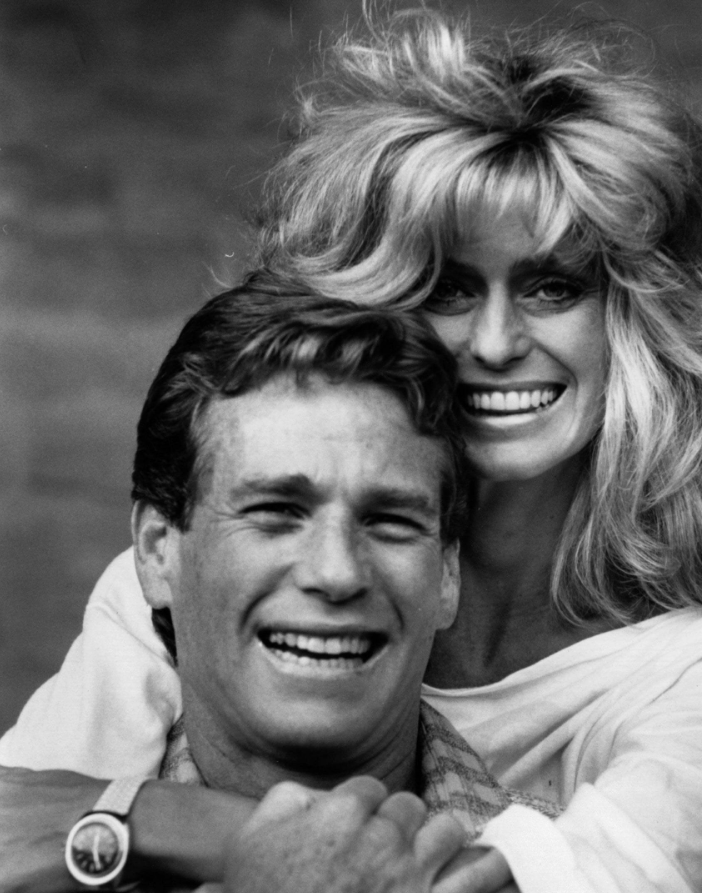
Even though Lee Majors and Farrah Fawcett didn’t officially divorce until 1982, they had already separated by 1979. Despite O’Neal being a friend of Majors, Fawcett and O’Neal were open about their relationship, even sharing a kiss while being questioned by reporters.
“Farrah and I have no plans to marry — nor do we have plans to separate,” O’Neal said. “Don’t fix what ain’t broken.”
In 1985, Fawcett and O’Neal welcomed their son, Redmond O’Neal. However, the relationship ultimately came to an end. Rumors suggested that around 1997, Fawcett saw O’Neal dating Leslie Ann Stefanso. Although they officially divorced in 1998, they reconciled after O’Neal received a leukemia diagnosis in 2001. O’Neal devoted himself to caring for Fawcett when she was diagnosed with cancer herself in 2006.
“The hair is gone,” he mentioned while caring for her.
“Her famous hair. I have it at home. She didn’t care. I rub her head. It’s kind of fun, actually, this great, tiny little head. How she carried all that hair, I’ll never know. She doesn’t have a vanity about it.”
“It’s a love story. I just don’t know how to play this one. I won’t know this world without her. Cancer is an insidious enemy,” O’Neal added.
Farrah Fawcett, at the age of 62, passed away on June 25, 2009. Ryan O’Neal lost his soul love, and her son Redmond lost his mother. Moreover, a magnificent star was lost to the universe. Farrah’s estimated net worth at the time of her passing was $20 million.
In his book, O’Neal detailed how Farrah passed away in his arms.
“After the priest leaves, I lie down next to her, wrap my body around her to keep her warm, and then take her hand. I can feel a steady pulse… I caress her hand for hours. Her heart refuses to quit,” O’Neal wrote in “Both Of Us: My Life With Farrah.”
“I’m left alone with my love. I take her hand. I can still feel her pulse, but now it is fluttering. She’s trying to let go. Her heartbeat slows, then disappears. On the morning of June 25, Farrah slips into eternal sleep.”
O’Neal still feels remorse about the past after having spent three decades with Farrah.
“I would have been much kinder, more understanding, more mature,” he remarked, expressing his desire for a do-over.
“I’d lose some of the savagery. I don’t know how she got cancer; maybe some of it was me.
“But ultimately, there was never a day I didn’t love her.”
Hollywood great Farrah Fawcett gave numerous memorable performances on cinema, and she will always be remembered for them. Please spread the word about this post on Facebook to your loved ones in honor of her legacy.


